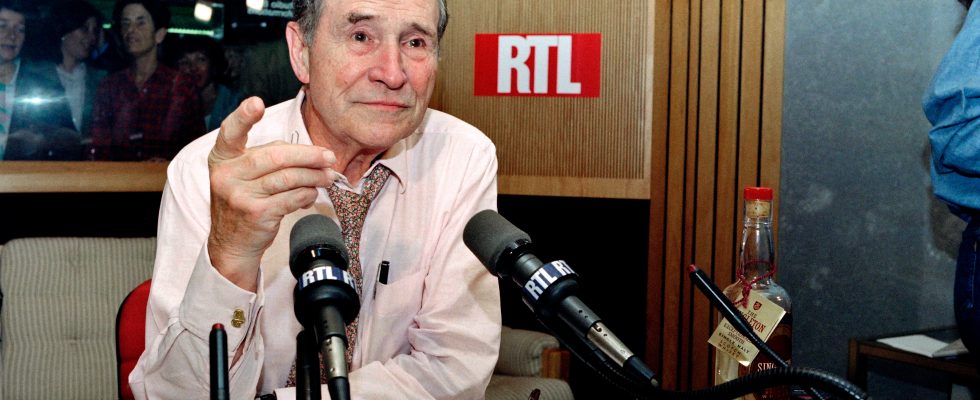Atypical, this Radio lovers dictionary it certainly is, with its 120 contributors orchestrated by Frank Lanoux, an “old timer” in the profession (pioneer at the start of RFM in 1982, then NRJ, Europe 2, RMC, etc.). This veritable army has set out to attack the world of the airwaves, a “theater of the imaginary” whose first broadcasts date back to 1921. In a beautiful public-private unity, all generations of presenters, directors, journalists, DJs, technicians… working or having worked for the centenary responded present: Fogiel, Hondelatte, Gerra, Ruggieri, Ruquier, Pradel, Elkabbach, Mazerolle, Bellanger, Aphatie, Cabrol, Dassier, Levaï, Hees, Vandel, Foucault, Cohen, Bloch, Bigot , Poincaré… right up to Alain Weill, a long-time companion of Lanoux, and current owner of L’Express.
With such a cast, one can easily imagine that over the entries in this dictionary of more than 550 pages, all facets of the media are covered, from the most technical (the microphone, the clock, the console, the pylon, etc.) to the most poetic (the night, empathy, the word, the intimate) through the imponderables, which are the live, the flash, the scoop, the report, the debate, etc. Everyone goes there with their quarter of an hour of nostalgia (ah, car trips or retransmissions of matches with dad, ah the wonderful Bellemare, Decaux, Desproges, Chancel), their expertise, and their apprehensions or hopes in l future of a media heckled by images, podcasts, social networks and faced with the disaffection of the youngest.
From this behind-the-scenes dive, we’ve extracted some sizzling facts. Thus, at the “Astrology” entry, Christine Haas remembers a Madame Soleil advising a 12-year-old teenager at length with “You, my boy, you are going to succeed in life…”, and patati et patata… before the teenager in question thanks her by saying “But Madam, I’m not a boy, I’m a girl!”
In the “Auditor” article, Jean-Jacques Bourdin recalls this emergency call from the Paris firefighters asking him to talk to a man who wanted to commit suicide from an eighth floor, and whom he managed to convince not to jump. . The immortal Alain Duhamel, (“Editorialist”), admits for his part having been mistaken about certain people (Ségolène Royal, Marine Le Pen), a confession that he ends thus: “I sometimes tend to take my wishes for realities, which is not normally the temperament of the analyst. It is a weakness.” There are much more dramatic memories: Wendy Bouchard (“Instant”) evokes with emotion January 7, 2015: “In a few seconds, from being a benevolent companion, I become the one who announces the carnage, the unnameable, the indescribable… the public in front of me is crying.”
The rule of five Cs
There was a time when we smoked and drank merrily in the studios. Alain Arnaud, from Europe 1, was not the last, as reported, amused, Catherine Nay and Charles Villeneuve (“François Ier”). Similarly, the bulldozer Jacques Chapus, of RTL, “hoarse voice and cheeky Parisian titi”, always had his glass of whiskey at hand. One day inviting the president of the RATP, Claude Quint, he gave him a profusion of “Charles Quint” (Bayard, Olivier Mazerolle). At the time, live readings of pubs were still sources of pretty slippages, as reported by Michel Brillié (“Imprévu”) about Spontex sponges: “Look at it… with its pink color… You soak it in water , it swells…” And Francis Blanche to take off his pants and anatomically illustrate the text in front of a hilarious Robert Willar.
Jacques Pradel remembers a gigantic breakdown in 1976 which he filled with a call for testimonies from listeners from the other side of the world (“Magic”), an unusual practice at the time. And Nicolas Poincaré recalls that “for a long time, the best radio reporter was the one who found a telephone first”. For once, we will end this quick inventory of a dictionary with the letter Q, an entry (“Quatuor”) treated by Roselyne Bachelot who, deprived of a microphone in the public service because a former minister, loops her text recalling the rule of five Cs: “It’s stupid, but that’s how it is!” CQFD
Radio lovers dictionary, under the direction of Frank Lavoux. Plon, 576 pages, €26.
